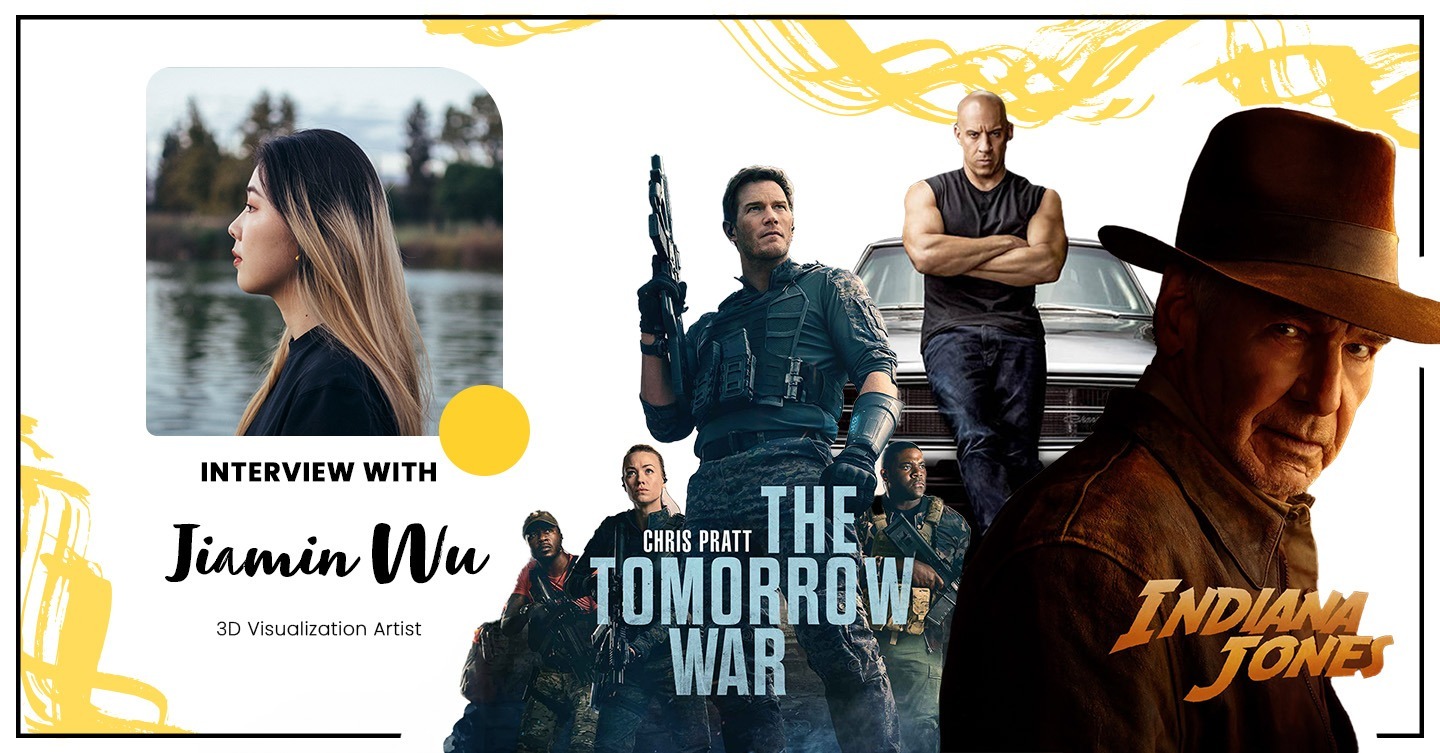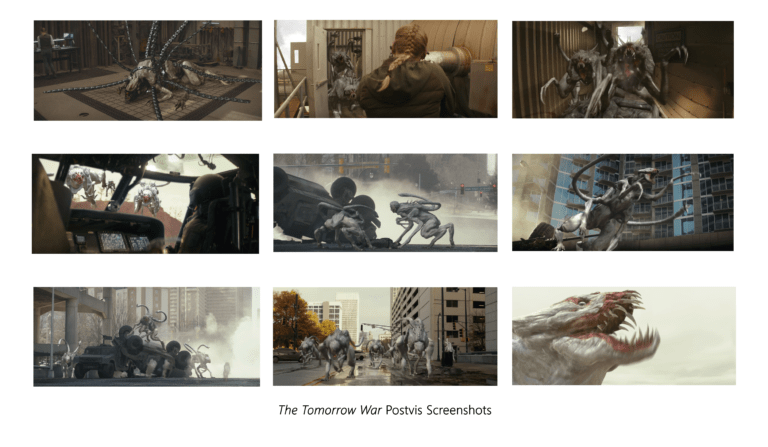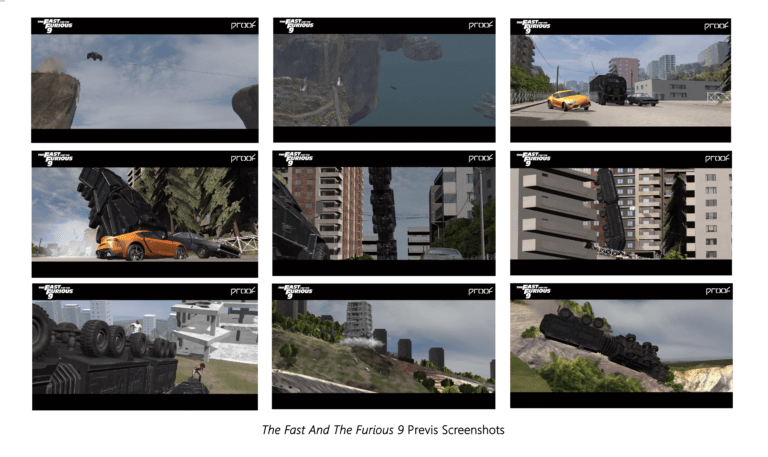
Exploring the craft of visualization with Jiamin Wu
Meet Jiamin Wu, a talented 3D Visualization artist renowned for her outstanding contributions to blockbuster films such as Indiana Jones and Fast 9, among others.
In this exclusive interview, delve into Jiamin’s passion for animation and gain insights into the intricate world of visualization in the VFX and Animation industry.
What aspects of the animation industry captivated your interest and led you to pursue a career in this field?
I had a huge passion for animation and art since I was a kid, drawn to both Western Disney/Pixar styles and Japanese anime. I’m fascinated by the idea that you can create your own unique characters, stories, and worlds through animation—the only limitation being your imagination.
What factors influenced your decision to pursue a position in Previsualization immediately following your graduation with a Bachelor of Fine Arts in Computer Animation from Ringling College of Art and Design?
While working on my thesis film, I really enjoyed working on the camera movements and editing; it provided me with a strong sensation as if I were holding the camera myself. Ringling also had a presentation by an alum working in previs, explaining to us how things work. I started to pay closer attention to composition and lighting when watching films. It’s fascinating how much emotion and feeling cameras can capture, that’s why I wanted to establish my career in visualization.
Could you please share more about your graduation film “Suit up” and how it helped you kick start your career?
I directed this film mostly by myself, with others assisting in sound design and music. Working on a solo project allowed me to gain a thorough understanding of the entire filmmaking process and enhanced my problem-solving abilities. Completing this film required a combination of my knowledge in storytelling, character design, animation, lighting, rendering, and various other skills. The experience has prepared me for the previs industry. I believe this short film demonstrates my capability to design a shot using both creative and technical skills, and that’s what landed me my first job.
Among your roles as a Previs, Postvis, Pitchvis, and Techvis artist, which position do you find most fulfilling, and what aspects of that role contribute to your preference?
I find working on previs particularly enjoyable as I have a passion for animating camera movements. It provides an opportunity to explore different options in the early stages of production, witnessing the movie’s development process. Additionally, I take great pleasure in postvis work, I personally feel the animation requirements are more demanding in postvis as it serves as the step before final VFX animation. This challenge pushes me to continually improve as an animator.
Can you provide a straightforward explanation of Techvis? Additionally, could you share your firsthand experience working on the technical visualization (Techvis) for Avatar 2?
Techvis a process between previs and actual shooting. We conduct tests in 3D software to determine the feasibility of camera movements in the real shooting location. For instance, in a location with a ceiling, if the shot requires a top-down view, we use actual data to create the scene in 3D software, ensuring the camera won’t hit the ceiling during its movement
For Avatar, it’s a little different because there’s no such thing as previs or postvis. They aim to merge preproduction and postproduction. My involvement was primarily in the third and fourth parts, and I’m unable to disclose specific details at this time.
Among the blockbuster projects you’ve contributed to, which one stands out as the most enjoyable for you, and what aspects of that project made it particularly fulfilling?
Every production is unique, but I particularly enjoyed working on “Indiana Jones and the Dial of Destiny” and “Avatar: The Last Airbender” These projects marked my initial experience utilizing Unreal in production. This provided me with the opportunity to learn Unreal, and even though the rendered sequence is not final, it still looks really good. I feel I have more creative control as I’m also contributing to lighting and animating the effects for it.
What combination of creative and technical skills is essential for someone aspiring to become a Previs or Postvis Artist?
The essential skills vary depending on the company. From my experience, crucial skills include shot creation and animation in Maya. Shot creation involves understanding basic composition principles and rules for camera movements. Animation skills includes character, creature, prop, and effects animation, as well as mocap cleaning. Additionally, depending on projects and teams, visualization artists often need basic skills in rigging, modeling, texturing, and compositing, and sometimes even tracking and editing. Given the frequent use of UE in productions recently, having a basic understanding of lighting and rendering in Unreal would be beneficial. The list is endless, there is always so much to learn!
Could you share your experience incorporating real-time software such as Unreal Engine into your workflow for Previsualization? Additionally, what drove the necessity for this integration?
I observed the evolution of Unreal and seized the opportunity to learn it through my company’s free class. The first production I used it for was “Indiana Jones and the Dial of Destiny.” In my role as an animator, I animated most elements in maya, imported them into UE using the studio’s plugin, and then added effects, adjusted lighting, and rendered the shots. We progressively incorporated UE into more productions, and currently, most projects prefer UE as part of the pipeline. UE not only enhances visual quality and expedites rendering but also sets the tone early in production, facilitating effective sequence pitching to studios. It genuinely suits the needs of previsualization.
Kindly elaborate on the Previsualization contributions you made for Fast 9 and The Tomorrow War, highlighting key aspects of your work in these projects.
I worked on both previs and postvis for ‘Fast 9’ during my earlier years as a junior artist. The Fast saga is known for its crazy car-chasing scenes, so I spent a lot of time studying vehicle animation. It’s really interesting that the cars won’t move in certain ways in reality as it goes against physics, but that’s the charm of this saga. We had to create things unrealistically crazy but still believable at the same time.
Additionally, I worked on postvis for ‘The Tomorrow War,’ where the creature was uniquely designed for the production, so the animation can be challenging. With no exact reference available, we had to piece together references for different parts of the creature. Both projects made me realized the importance of finding a delicate balance between reality and imagination in the creative process.
What valuable insights and lessons have you gained from your professional work experience?
Work smart, not hard. Being efficient is important in visualization since there are so many shots to go through. I always try to find pre-made or mocap animations that I can start with and don’t go too far on my initial pass, knowing there will be revisions. Effective communication with supervisors to understand the intention behind each shot is key. Depending on the situation, don’t hesitate to adjust based on your own understanding. This is vital for growth as an artist, understanding both how and why.
What advice or recommendations would you offer to fellow students based on your experiences?
I’ve realized the learning path is endless in this field, making it incredibly interesting and refreshing because you’re always growing as an artist. So, don’t worry about not knowing enough and making mistakes. However, this also means you have to keep up with the changes in the industry and consistently invest time in learning new skills. Spend time watching good movies and shows, and learn from other artists’ work.
Work smart, not hard. Being efficient is important in visualization since there are so many shots to go through.
In the face of significant job losses resulting from events like the writers’ strike, how would you advise fellow artists to navigate and mitigate the impact on their careers and well-being?
It’s unfortunate that many things are beyond our control, and it has affected the consistency of my production as well. It’s important to look for help and prioritize maintaining stable mental health. I know it’s easier said than done; personally, I find talking to other artists helpful. I’ve also noticed some artists establishing personal studios or offering classes, charging for reel reviews and critiques—a potential option. Additionally, it can be a good moment to consider taking classes, acquiring new skills, and expanding our skill sets to better prepare for the future.
Addressing a prevalent concern in the creative industry, where advancements in A.I. are perceived as a potential threat to job security, what guidance or advice would you provide to artists who may harbor fears about the impact of A.I. on their professions?
I believe many artists are advocating for regulations to protect copyrights, as none wish for personal work to be utilized to train AI and potentially disrupt the job market.
Speaking from my understanding of the visualization industry, the way AI currently creates video is significantly different from our established pipeline, making it hard to modify. While working on shots, the notes can often be highly specific, such as changing the camera angle by 5 degrees. I don’t feel AI is an easy tool to use for those final nuanced adjustments, but sometimes art is all about refining that last 5 percent.
But I do see AI as an opportunity to benefit artists as well, enabling faster learning and the creation of customized tools using AI.
I believe, as artists, we need to set boundaries and ensure we receive what we deserve. However, we must also be aware that AI is not going away; we need to know it and use it as our own creative weapon.
Thank you Jiamin for sharing your experience with our readers.
You can get more info or Get in touch with Jiamin Wu on the following links:
Website: https://www.kinowu.work/
Linkedin: https://www.linkedin.com/in/jiamin-wu-24a605113/
Instagram: https://www.instagram.com/kinoooooowu/
About the author
-
Based in India. Khalikh is a Previs and Cinematic Designer with over 6 years of experience in the Indian Film Industry. His passion for films and animation led him to the city of dreams, Mumbai, and he found the world of filmmaking.
He loves to share knowledge and he believes what J.M. Cornwell has rightly said
"“Knowledge is wasted when it isn't shared.”





